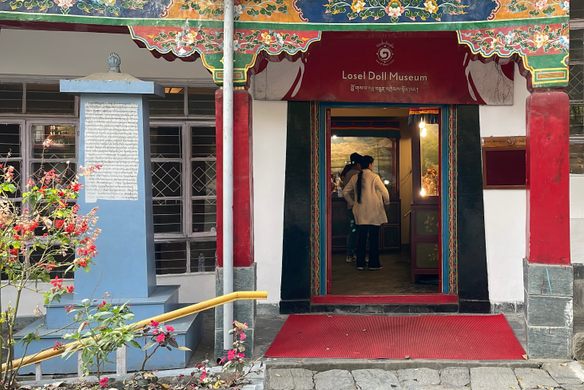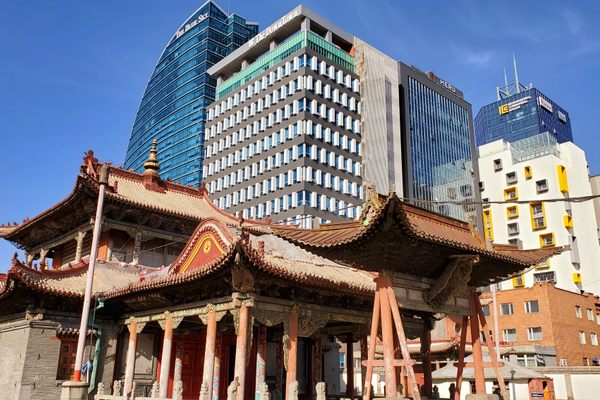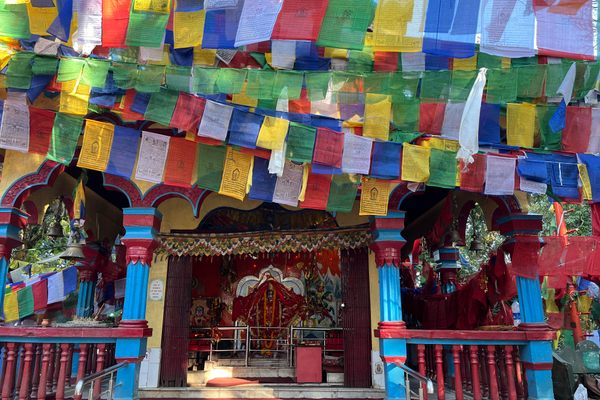AO Edited
Losel Doll Museum
The art and tradition of Tibetan costumes are preserved through these dolls made by Buddhist monks.
The meticulously detailed, lifelike dolls of the Losel Doll Museum offer a colorful glimpse into the life and culture of Tibet. Made by Buddhist monks living in exile in India, these figurines are reminders of the fascinating Tibetan daily life. The museum is located on the campus of Norbulingka Institute, a center for arts dedicated to the preservation of Tibetan art and culture in Dharamsala.
The Losel Doll Project was started by the Council for Religious and Cultural Affairs of the Tibetan government-in-exile in 1983. These statuettes are 5 to 25 inches tall and made from wire, fine clay, Tibetan paper, cotton, and paper-mâché. Clothes and accessories worn by the figures are hand-tailored from wool, cotton, silk brocade, and animal furs and long strands of hair are from the tails of Tibetan yaks. Intricate headdresses, jewelry, and other accessories are crafted from a variety of decorative beads and metal trinkets.
“A group of around 10 to 15 artist monks of the Loseling Monastery in Mundgod, Karnataka were entitled to make the dolls. That is where the name Losel doll comes from,” said Tenzing Lhamo from the Norbulingka Institute. “The monks took around 12 years to create a line of 150 beautiful dolls.” The dolls were premiered at the Library of the Dean of Westminster Abbey in London. Visitors from all over the world loved the figurines and commissioned more dolls from the monks.
According to Lahmo, “Loseling Monastery monks created the Losel dolls to preserve and promote Tibetan traditional costumes using the technique of doll making.” Drepung Loseling Monastery in Tibet was modeled after the great monasteries of Classical Buddhist India, namely, Nalanda and Vikramalashila. Gradually, the Loseling monastery became a prestigious center for learning the traditional Buddhist arts and sciences. But with the Chinese Communist takeover of Tibet in 1959, hundreds of Buddhist monasteries were destroyed and the monks were either killed or imprisoned.
Around 250 of Loseling’s monks managed to escape and found safe refuge in Mundgod, a town in the Indian state of Karnataka. There, they built a replica of Drepung Loseling monastery, where they carried on the traditions that they had once practiced in Tibet.
Know Before You Go
The museum is open between 9 a.m. and 5:30 p.m. It is closed for three days of Losar, Tibetan New Year, which usually falls in February. There is no entry fee to the museum but there is an entry fee for the institute, ₹50 for Indians or ₹110 for international visitors.
While you are in the Norbulingka Institute you can visit the art studio which has Tibetan statue making, thangka painting, screen-printing, appliqué and tailoring, woodcarving, wood painting, paper making, wood, and metal craft.



















Follow us on Twitter to get the latest on the world's hidden wonders.
Like us on Facebook to get the latest on the world's hidden wonders.
Follow us on Twitter Like us on Facebook